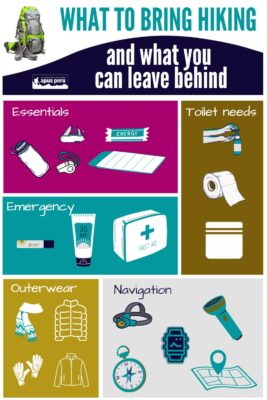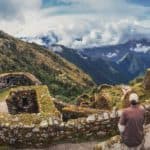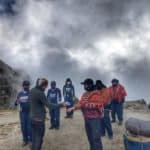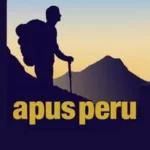Packing for hiking can be tricky, especially for beginners who have no prior experience of what they might need out on the trails or among the mountains. How to pack for a hike or knowing the right backpacking essentials for longer treks often comes from experience – hence this post.
Here at Apus Peru we know exactly what to bring hiking – and what you can leave behind. From safety items to clothing, footwear, packs and other things to bring, this post aims to help you create the perfect hiking packing list for your outdoor adventures. Wherever you’re headed.
If you’re going day hiking, what to pack is a matter of keeping your load to a minimum while making sure you have all the hiking necessities you require. Packing for a day hike is different to preparing for a longer trekking trip, so we’ll take a look at the distinction between the two before moving onto that backpacking checklist.
We then cover what to take hiking, including essentials for a day hike. Extra things to bring on a hike are also covered, including items like hiking boots and backpacks for your trek. From the best women’s day hiking backpack or leggings to equipment for hiking that could just save your life. All the items you might need are detailed right here.
Read to create your ideal day hike packing list. Including all the things you need, so you can avoid being weighed down by items that don’t really belong on any day hike essentials list.
If you are looking for a general Peru packing list, check out our guide with more details on it!
This post may contain affiliate links, from which we would earn a small commission, at no extra cost to you.
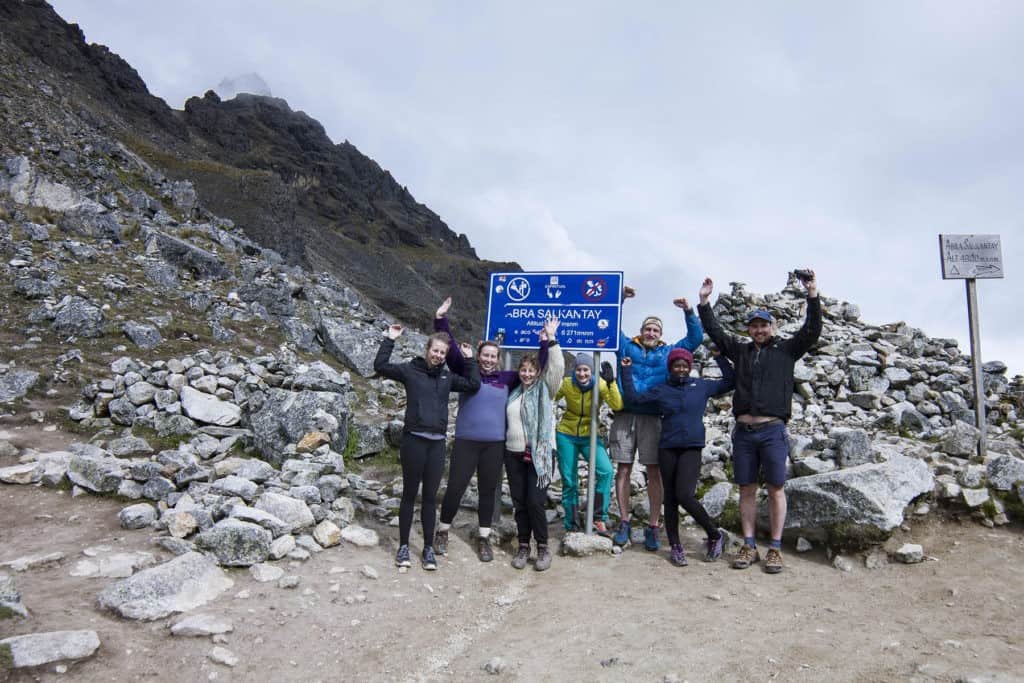
Packing for Hiking: Day Hikes vs Multi Day Hikes
What is the difference between a day hike, a trek and a multi day hike? A day hike is just that. It lasts for no longer than a day and no overnight stays are involved.
Multi day hikes or backpacking treks are more prolonged trips that take place over at last two days. As you’ll be staying over, you’ll need extra equipment such as camping and cooking gear, and certainly a sleeping bag.
If you book an organized trip, however, food, tents and other kit may be provided by the tour operator. So do check before you finalize that trekking essentials list. You’ll find more on what to pack for a longer trek further down the page.
Hiking Packing List: Top 10 Essentials
What to Wear
When thinking about what to wear for hiking, the key is to dress in – and carry – layers. Moisture-wicking, fast-drying clothing is best, as it won’t weigh you down or make you feel cold or uncomfortable. You’ll also need a good daypack for carrying the items on your day hiking packing list.
- Footwear – Hiking boots, shoes or sandals
- Fast-drying hiking shirt
- Fast-drying hiking pants
- Hiking socks
- Daypack
Add in Summer
Add in Winter
- Extra layers
- Down jacket
- Beanie hat
- Scarf or snood
- Thermal gloves
- Crampons or spikes for ice and snow
What to Carry
While you might need to include more than this on your hiking trip packing list, especially for overnight stays, this list of the top 10 essentials makes a good starting point.
- Water – Ideally in a BPA-free, refillable bottle, or filter water bottle.
- Food – Snack bars as a minimum for shorter day hikes.
- Navigation – A compass plus a map of the local area, as well as your smartphone.
- Multi-Tool – A Leatherman with a knife and various other attachments.
- 1st aid kit
- SPF – You’ll need this even in winter wherever the sun shines.
- Headlamp or Torch – Make sure it has new or spare batteries.
- Matches or Lighter – In case you need a fire source.
- Shelter – You can buy very small, packable shelters.
- Extra Layer/s – You may need a waterproof or down jacket, or an extra fleece layer.
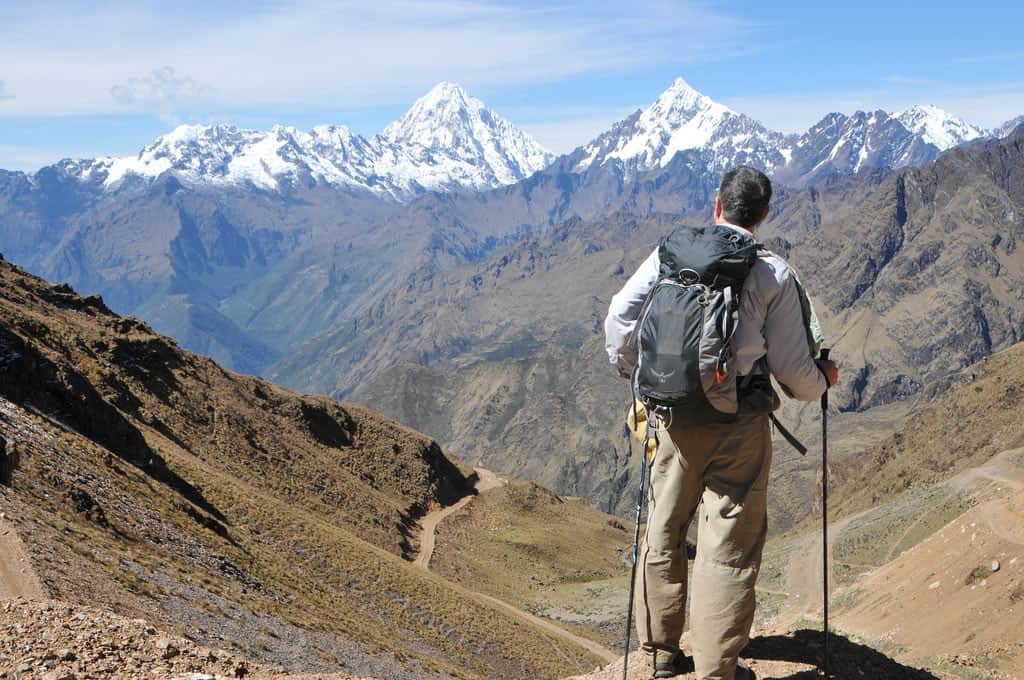
Hiking Essentials: Safety & Survival Items
No list of day hiking essentials would be complete without the items you’ll need to ensure your safety and survival – especially if you’re heading into the wilderness or remote areas.
The following day hike gear includes various items you might want to pack. The question to ask yourself is – if you got lost or stuck during the day, could you manage without them?
Navigation
It may be old-fashioned, but compasses have long provided hikers with a fail-safe way to navigate and doesn’t rely on technology. There are many hiking compasses to choose from, some of which come with features like a tough storage pouch and a belt loop, or are water and shake proof. A compass is a must for your list of things to take on a hike. Make sure you know how to use it before setting off, too!
Map
A map of the local area you’re headed to is an absolute must for your list of hike essentials. Make sure you choose one that’s recommended by hikers who’ve already visited the area if possible.
Compass
It may be old-fashioned, but it’s long provided hikers with a fail-safe way to navigate and doesn’t rely on technology. We recommend this one, which comes with a tough storage pouch, a belt loop and is water and shake proof. A compass is a must for your list of things to take on a hike. Make sure you know how to use it before setting off too!
Flashlight
A good flashlight belongs on any hiking must-have gear list. We like the latest hiking torches, which use LED light to illuminate larger areas. Tough, military grade torches are also built to last. Some packs contain two, meaning you get one each – or a spare. Don’t forget to take replacement batteries.
Headlamp
You can pack a headlamp instead of or in addition to a hand held flashlight. As it can be worn, you don’t necessarily need to carry it. This product again comes as a two pack, and is recommended for your hiking essentials list. Add extra batteries to your list too.
Personal GPS Device
They’re not cheap, but if you’re going to do a lot of hiking or trekking then a GPS device like this Garmin is a great investment in your safety as well as your ability to navigate and communicate. They are certainly considered hiking must haves by some people – particularly keen trekkers who already own them.
Personal Locator Beacon
Again these are pricey. However, they could potentially save the lives of those heading away from civilization. This ACR one is a highly rated choice, and a great addition to a list of things to carry for trekking or hiking.
Altimeter
For those who’ll be hiking at high altitudes, an altimeter is an item to add to a hiking kit list. We like this rugged yet lightweight one from Sun Company, which can be worn around the neck.
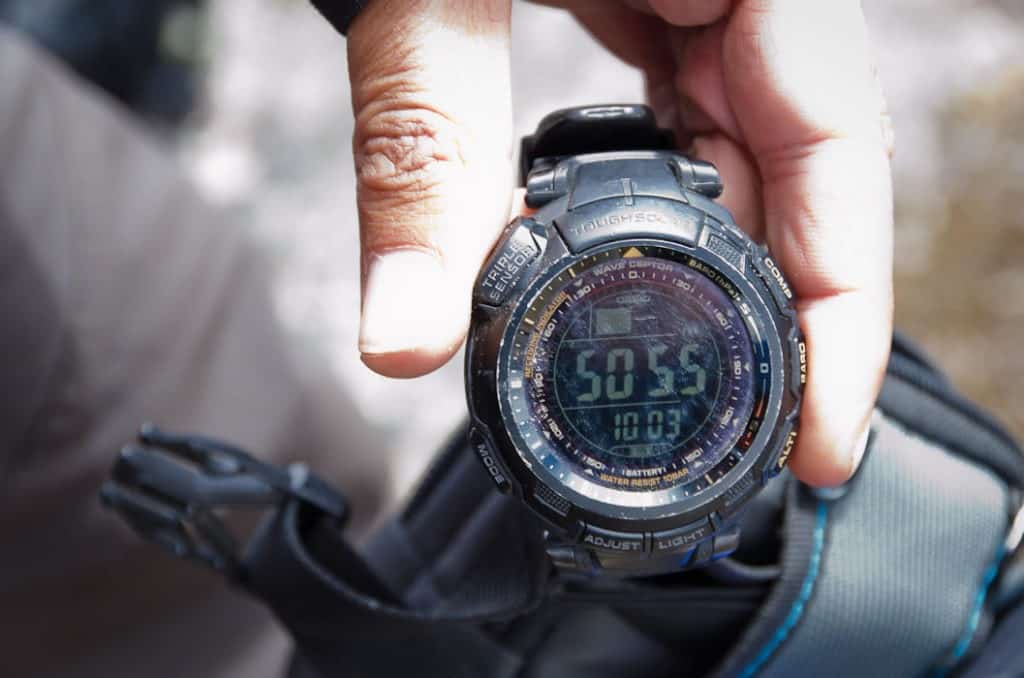
Emergency Equipment
These items you may wish to consider taking could keep you alive is you get stuck in the woods or wilderness. It’s also wise to take extra layers of clothing, plus additional food and water for emergencies.
First Aid Kit
A small travel first aid kit doesn’t take up much space and again could make all the difference. Don’t forget to add any meds you need to take, adding an extra day’s worth just in case. A first kit is always one of those essential things to bring in hiking.
Leatherman Multi-Tool
The Leatherman Signal is a multi-tool specifically designed for camping. It is available in four colours, and makes a great gift for outdoor types. A great addition to any list of hiking essentials for women or men, so she or he can cut, hammer open cans and bottles, whistle for help and much more. It also has a 25 year warranty and comes with a fire starter ferro rod.
Fire Starters
A few fire starters could also help to keep you warm if you get stranded, while sending out a smoke signal to rescuers. These eco-friendly ones are a good addition to any hiking trip packing list. Don’t forget to pack matches too!
Emergency Whistle
Hanging a loud, shrill-sounding whistle around your neck on the lanyard supplied may mean you can call for help when it’s needed. Ideal to pack for a hike for those heading off the beaten track, and weighs virtually nothing.
Survival Sleeping Bag
A strong, warm and ultra lightweight sleeping bag – or bivy – is ideal if you do end up having to camp overnight. We like this one by the aptly named brand ‘Don’t Die In The Woods’! This piece of basic hiking gear only weighs the same as an apple. Incredible huh?
Survival Tent
Yep. Don’t Die In The Woods also do an emergency shelter for two that will keep you warm and dry if you are lost overnight. In terms of what to pack for hike this could also be a lifesaver, so add it to your list of National Park hiking essentials if you plan on going far off-grid.
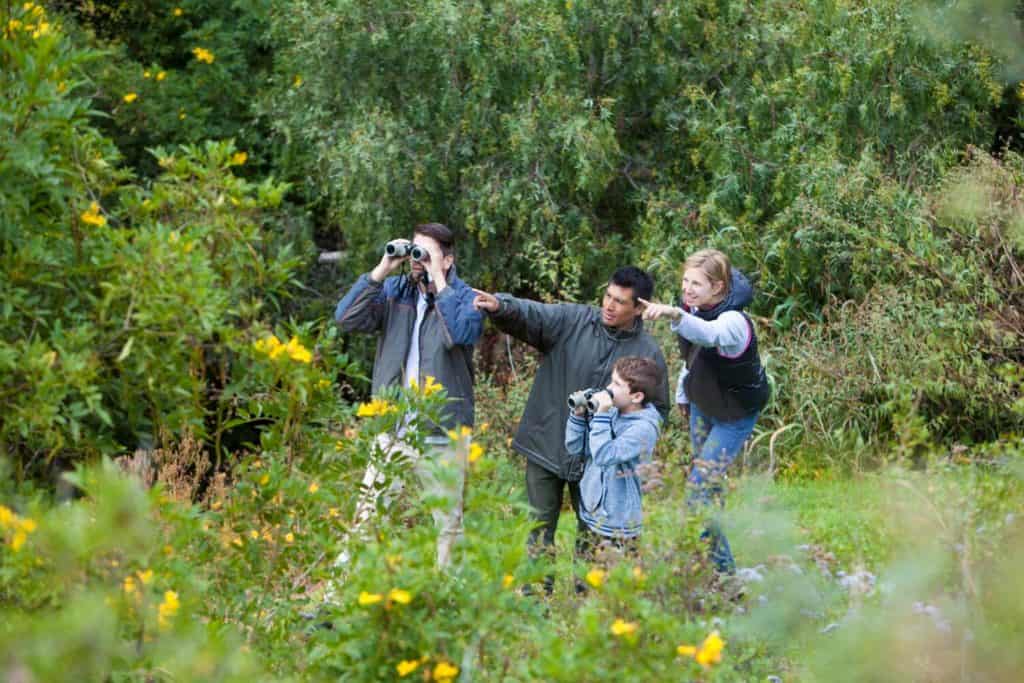
Other Hiking Essentials
Other key things to bring hiking are concerned with your comfort rather than absolute survival. Sunburn and being bitten by bugs can for instance be a real nuisance, and you need to think about those calls of nature. But first – hydration and sustenance.
Water
BPA Free Water Bottle
A BPA free bottle for water is a must – unless you’re taking a hydration reservoir instead. Water is the number one items on any list of hiking essentials for beginners or experienced trekkers. We like the highly rated Camelbak water bottle. It’s BPA free; is durable, lightweight and leakproof; and comes in four sizes and around a dozen colours.
Water Reservoir
If you want to take along a hydration reservoir, you’ll need to check that your daypack or backpack is compatible with it. For an Osprey pack, for example, it’s best to opt for an Osprey hydration bladder.
Energy Bars
Energy bars can be hiker’s best friend. Whether you’re skipping a meal in order to get back before dark, get stranded somewhere or simply need a a burst of energy, these should keep you going. This is not the time to think about calories – more is most definitely more in this case, especially when you need to carry it. Anything that packs in the carbs and protein is a good bet.
Sunscreen
Sun Protection Formula
A good SPF formula is definitely one of those key things to pack for hiking. Even if it’s winter, anyone hiking at high altitudes will need sunscreen to avoid getting burnt. We like to use eco and reef friendly formulas.
SPF Lip Balm
Lip balm with added SPF is incredibly light to carry and key for keeping lips from becoming chapped or dry during winter or summer. For us, one of the 10 essentials for hiking for sure!
Insect Repellent
Another item to add to any day hike checklist is bug repellent. You can buy travel size insect repellent so it’s not too much to carry.
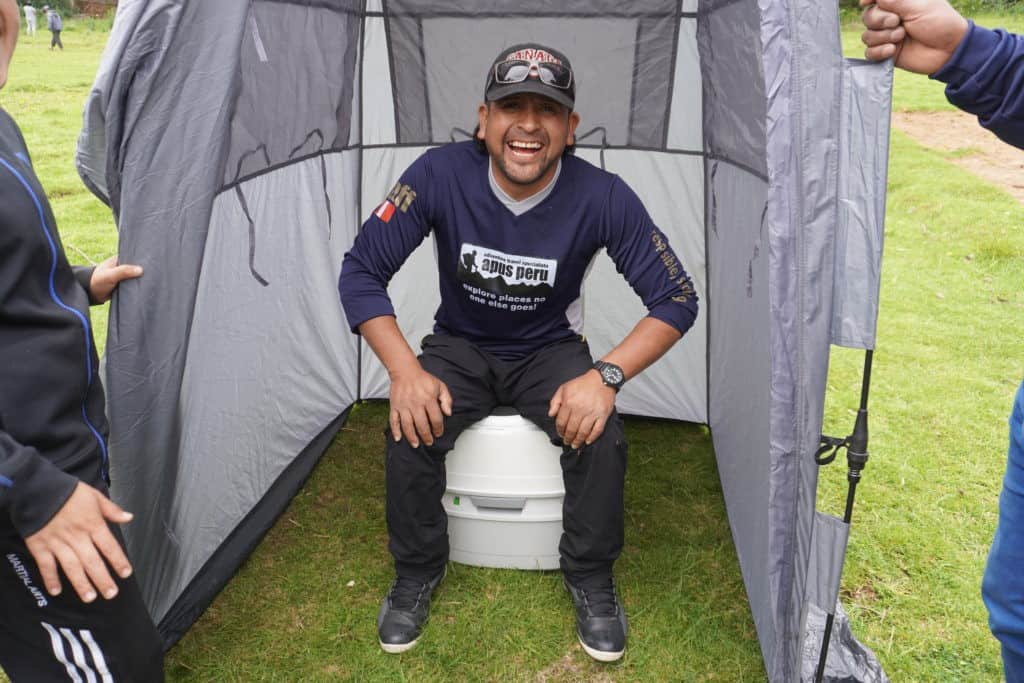
Toilet Needs
This might not be first on your list of what to pack for a day hike, but let’s face it – we all gotta go. So please do tread carefully and leave no mess behind you. To cope with outdoor pooping, you can bury the waste about eight inches deep and carry used paper in a ziplock bag. You might need, therefore, a trowel for digging a big enough hole, toilet paper, ziplock bags and hand sanitizer for cleaning up afterwards.
At Apus Peru our guides will go through toilet etiquette when you are on the trail, but this is a brief idea. When you are at a campsite in the morning or evening, plus lunchtime, our crew will set up our portable toilet for you to use. However, if nature calls between these breaks then its time for a “bush wee” in Australian slang. You need to find a discrete place to go, and if you need to wipe make sure you put your used toilet paper into a ziplock bag. You can dispose of it at the next campsite.
If you are needing to do a Number 2, ask our guide for a shovel and their advice on a place to go, away from a watercourse. When done, again make sure your used toilet paper goes in a ziploc bag. Do not bury it please!
Camping Trowel
Would it surprise you if we said we’re quite excited about the Tent Lab camping trowel? Probably, but take a look and you might just see what we mean. It comes in a ton of colours and three sizes, and makes a cute addition to your packing list for a day hike. Yes really!
Toilet Paper
No one want to lug a whole roll of toilet tissue with them, so Coghlan’s packable camping toilet paper is ideal for hiking purposes. So add it to your checklist for a day hike or overnight trip.
Ziploc Bags
Please, PLEASE do not leave your soiled toilet paper out there for all to see and to harm the environment, – you need to carry it with you in ziploc bags. A no brainer for that list of what to bring on a day hike, surely?
Hand Sanitizer
A little travel size pack of hand sanitizer will also be needed for after those trips to the al fresco toilet, so don’t miss this when writing a day hiking gear list.
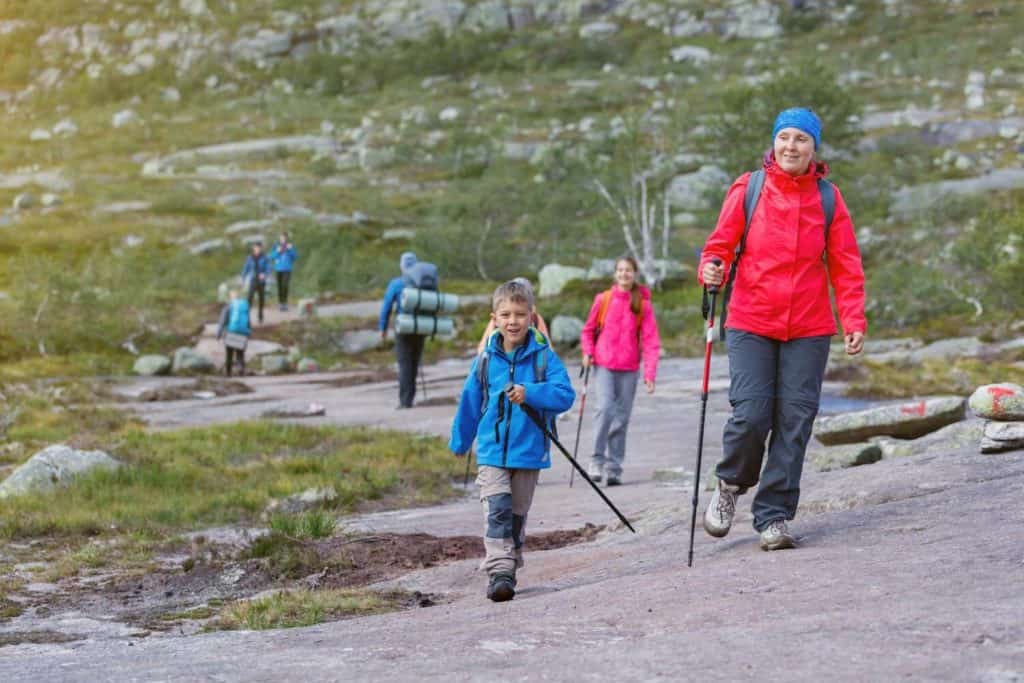
What to Wear for Hiking
What to wear to go hiking is the next thing to think about. Clearly what to wear hiking in summer differs from what to wear hiking in cold weather, but there are some common items worth adding to your hiking what to wear list.
Layering is often key, especially perhaps when hiking during early spring or late fall when temperatures can vary dramatically during the course of the day (and night). Adding layers to your list of essential hiking gear means you can adjust your clothing accordingly.
Lightweight layers are the best choice, as when you’re not wearing them you will need to carry them! Waterproofing is also very important – head off without a rainproof poncho or packable jacket at your peril.
Hiking Pants
Convertible Hiking Pants
Unless you’re hiking in winter or a cold climate, a pair of breathable, convertible hiking pants is a great idea. The legs can be zipped off to make them into shorts, so if the temperature rises out there you won’t get too hot and sweaty!
Columbia convertible hiking pants are ideal for men and women, and come is a wide range of sizes, colours and shapes. For many, these are essentials for hiking in summer.
Regular Hiking Pants
If you don’t want the zip-off legged pants, a regular pair from Columbia is also a great choice to wear as day hiking gear.
Hiking Shirts
Hiking shirts are available to buy as long or short sleeved t-shirt style tops or button-up shirts. Good ones will wick away moisture, and may also keep you warm in colder weather. There are plenty of Columbia hiking shirts for men and women to pick from in all styles, sizes and colors. As they’re loose and breathable, they make great essentials for trekking. Good shirts are high on the list of hiking needs!
Hiking Footwear
Hiking boots, shoes or sandals? It really depends where you’re headed. Hiking boots are the most supportive, and are thus ideal for longer trips like multi-day treks. They also tend to offer the most insulation.
Hiking shoes and sandals are lighter and more breathable, however. Whatever you pick, at least you don’t have to add shoes to your list of what to carry when hiking!
Hiking Sandals
If you want lighter hiking sandals for summer, Teva offer some really good ones for both men and women. Keen are a decent brand too, especially if you want something more substantial. For those hiking in warmer climates, and on more forgiving terrain, definitely an essential day hiking gear item.
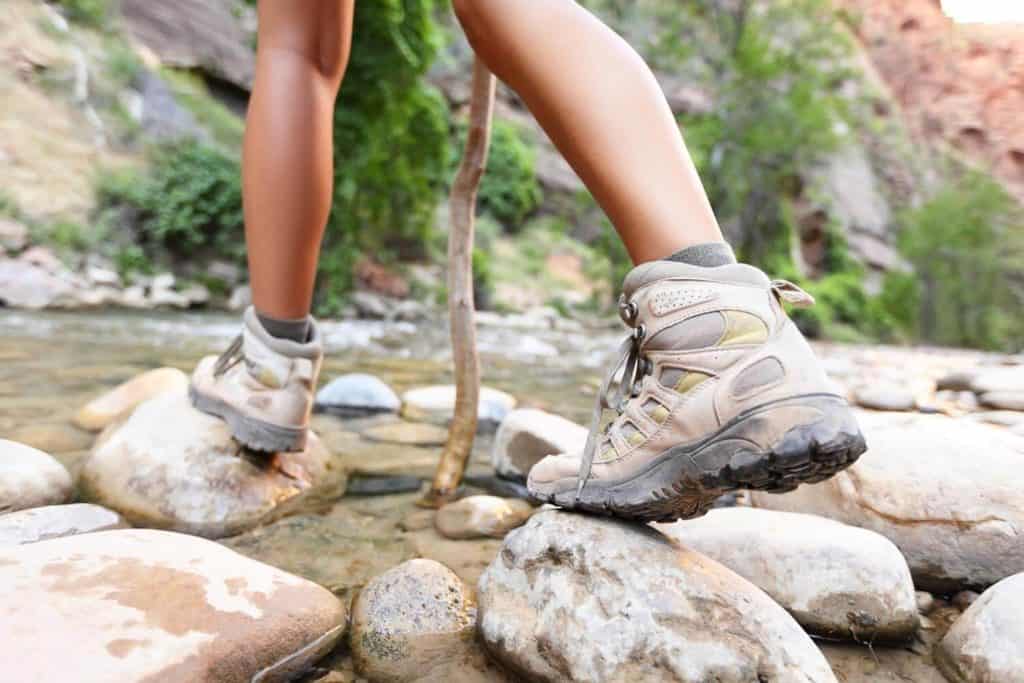
Hiking Shoes or Boots
Merrell offer some of the best hiking boots and shoes around – and all are very highly rated by customers. There are high, mid and low top versions for both men and women in the range. Solid, supportive yet lightweight footwear surely tops any list of items needed for hiking.
Hiking Socks
We love Darn Tough hiking socks, which really are made for outdoor life. The designs are fun, they are well cushioned and come in various lengths for female and male trekkers. Not the cheapest things for hiking, but well worth the money.
Crampons or Spikes
Spikes or crampons to fit onto your shoes are only really necessary when hiking in ice or snow. If that’s your plan, they’re a must when packing for a hike in winter.
Hiking Headwear
Depending on the weather conditions, you may wish to add a sun or beanie hat to your list of hiking bag essentials. Sunglasses are also a must!
Sun Hat
We recommend taking or wearing a sun hat with a strap, as it’s less likely to blow away when it’s windy. An essential for a summer day hiking gear list if you don’t want to get burned – or too hot.
Thermal Beanie
Again Columbia offer some great thermal beanie hats for men and women. If it will be cold, wearing a heat really can make so much difference in keeping you warm, as so much body heat escapes via the head. Add this to your day hike pack list if it could be chilly.
Sunglasses
Polarized sunglasses are the best choice as they offer superior protection for the delicate eye area. Sporty ones are tougher too, and thus perfect for hikers. This is key among things to bring on a day hike – and you can wear rather them rather than carrying!
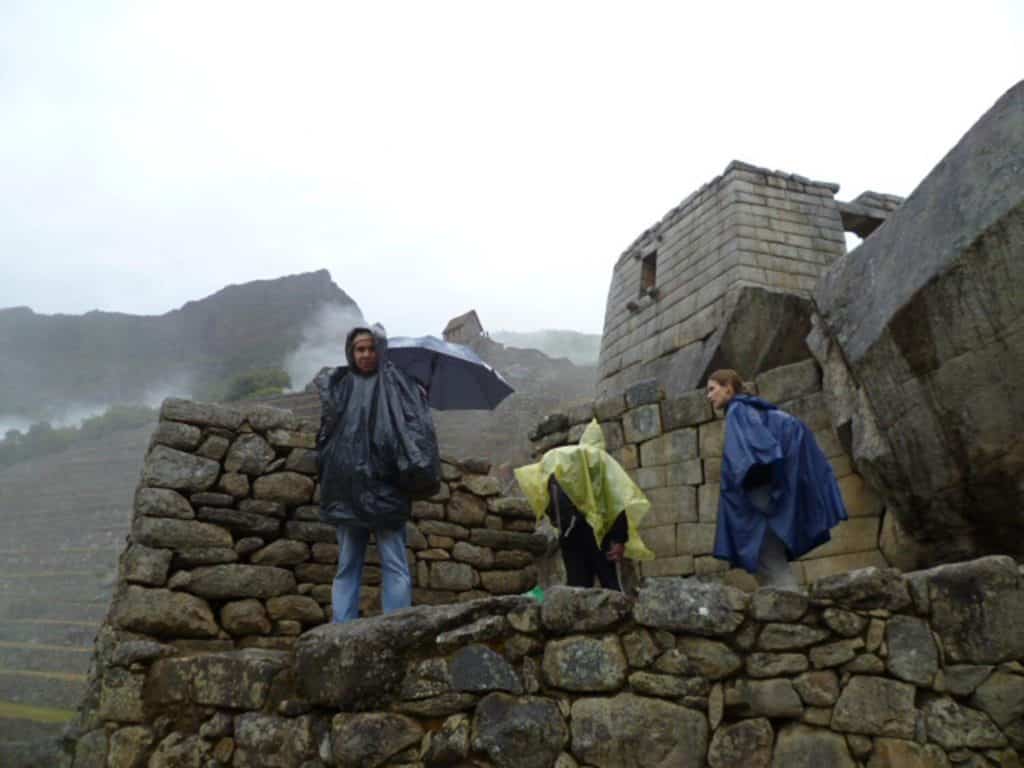
Hiking Outerwear
Again the kind of outerwear you need when hiking depends on the season and the country. We recommend taking a packable rain jacket or poncho wherever you go, while items like a down jacket are great for colder climates.
Thermal gloves and a scarf also go well with that thermal beanie hat when you’ll be trekking in wintry weather.
Packable Rain Jacket
You can risk not packing one, but for us this is one of those things to take on a day hike – always. Weather forecasts are not always accurate, and it’s no fun being soaking wet. When it’s cold, that could even be dangerous. There are plenty of Columbia packable jackets to pick from.
Poncho
You can buy disposable or reusable rain ponchos for men and women. We prefer the latter as they’re kinder to the environment. If you’re pondering hiking what to bring and don’t want to pack a jacket, plump for a poncho instead.
Fleece
A hiking fleece is ideal as outerwear to use alone or to don beneath a down jacket if it gets really cold.
Down Jacket
There is no better choice than down when it comes to superior warmth, and natural down is also far more lightweight than synthetic materials. Rab have a great range of down jackets for women and men.
Thermal Gloves
Good thermal gloves are day trip hiking essentials when it’s cold outside.
Scarf
A hiking scarf can be useful in summer as well as winter, though of course you’ll want a lighter one for sunny days. Options to add to your day hiking backpack essentials include snoods and bandanas as well as regular scarves.
Base Layers
Another weapon in the fight against the chill is a base layer – and this can also be worn at night when it’s chilly. These can be very affordable to buy, though it can be worth paying more for merino wool if you trek often.
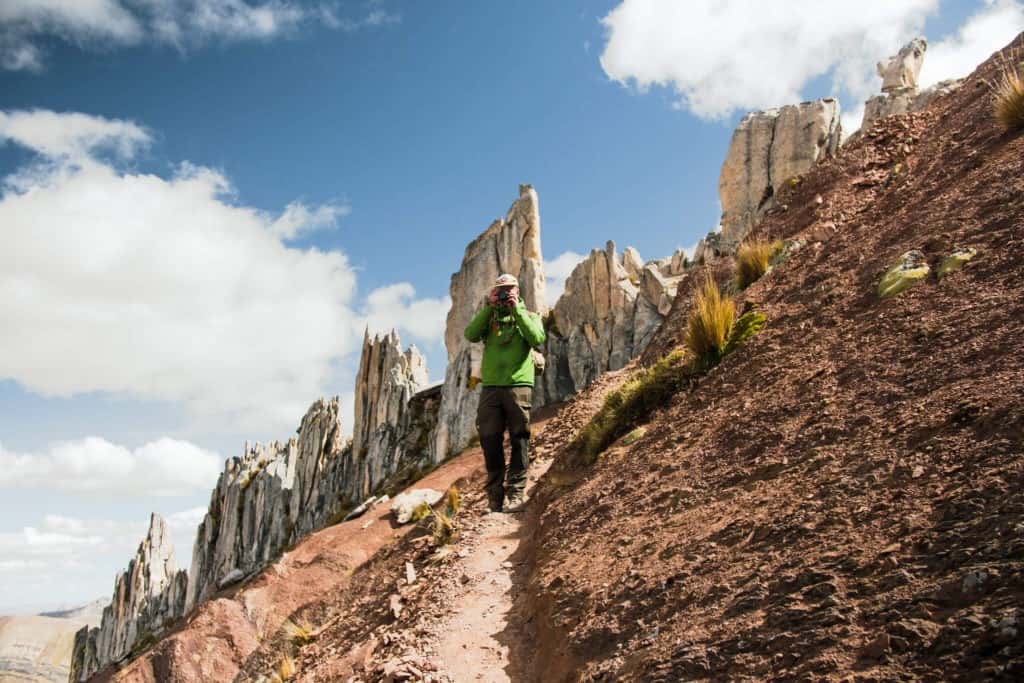
Hiking Luxuries
While they may not be strictly necessary, taking along one or two luxury items can make your trek so much more enjoyable. We’re not talking five star facilities here, simply items to make your day more fun such as a GoPro camera, a hammock or a pair of binoculars.
Though these items might not belong on any list of 10 essentials for hiking, they are certainly very nice to have with you.
Action Camera
Don’t forget – you might see some unmissable sights out there in the woods, on the trails or in the wilderness. Packing a GoPro means you can capture these on film easily, and this type of action camera is a great travel companion for other trips too.
When packing for hiking, the prospect of using this makes the trip seem even more enticing. It’s tough and waterproof too, as the range is made to withstand the demands of the outdoor lifestyle. When you plan to pack for hiking in the near future, it’s well worth giving one of these due consideration.
Binoculars
A set of binoculars also means you’ll be able to see what’s going on more closely. A must for wildlife fans everywhere! We love the Nikon Trailblazer – a compact, waterproof model offering high resolution viewing, eco glass and a rubbery, armored casing. Not strictly essentials for a hike, perhaps, but good fun to use all the same.
Hammock
A hiking hammock means you can stop and enjoy the surroundings for a while as you take the weight off your feet. For anyone with back problems, this could be a heaven-sent accessory to add to your list of what to bring on a hike. There are single and double lightweight models available.
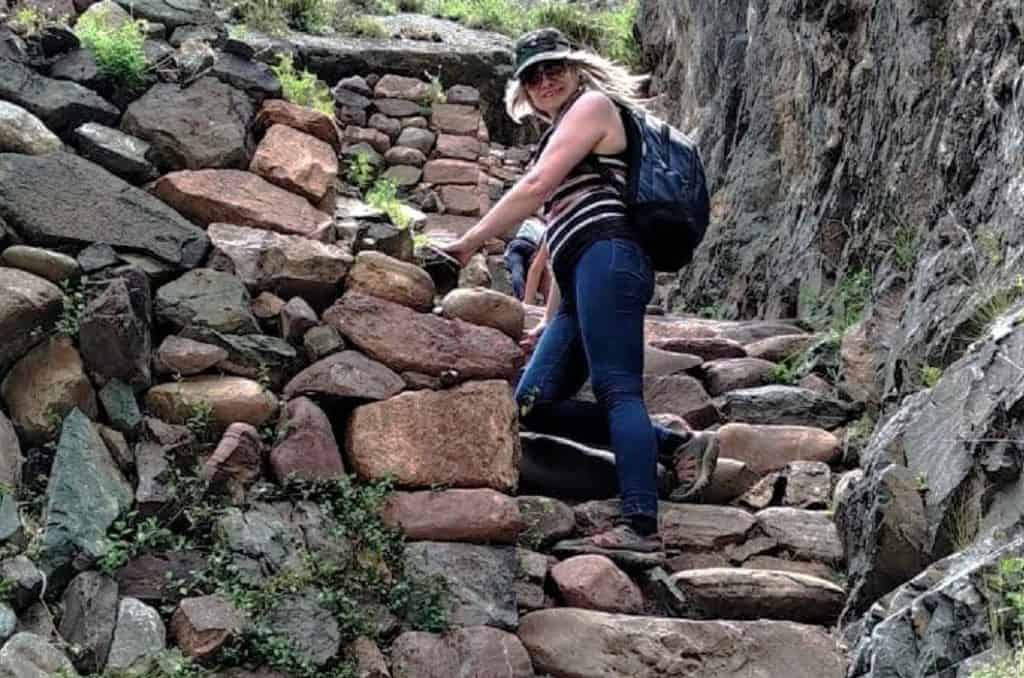
What is the Best Day Hiking Backpack?
So what can you use to carry all that kit on your hiking essentials list – apart from what you’re wearing?
A small day pack hiking is probably the best day hiking backpack, as it won’t weigh you down – though do make sure you’ll have space for everything you need or want to take along.
Best Hiking Day Pack
If you’re wondering where to look when seeking the best day pack for hiking, we recommend starting (and possibly finishing) with the Osprey range. They come as a very small day hiking backpack or a shoulder sling style, and many can accommodate a hydration sleeve. With larger options offered as well, it’s not a problem if the best day backpack for you is something bigger.
Day Pack Rain Cover
Investing in a rain cover for your day pack is very much worth it if you’ll be hiking in wet climates. Osprey rain covers, for example, are made to fit their packs perfectly and come in ultralight or hi vis options. Definitely one to think about when day hike packing.
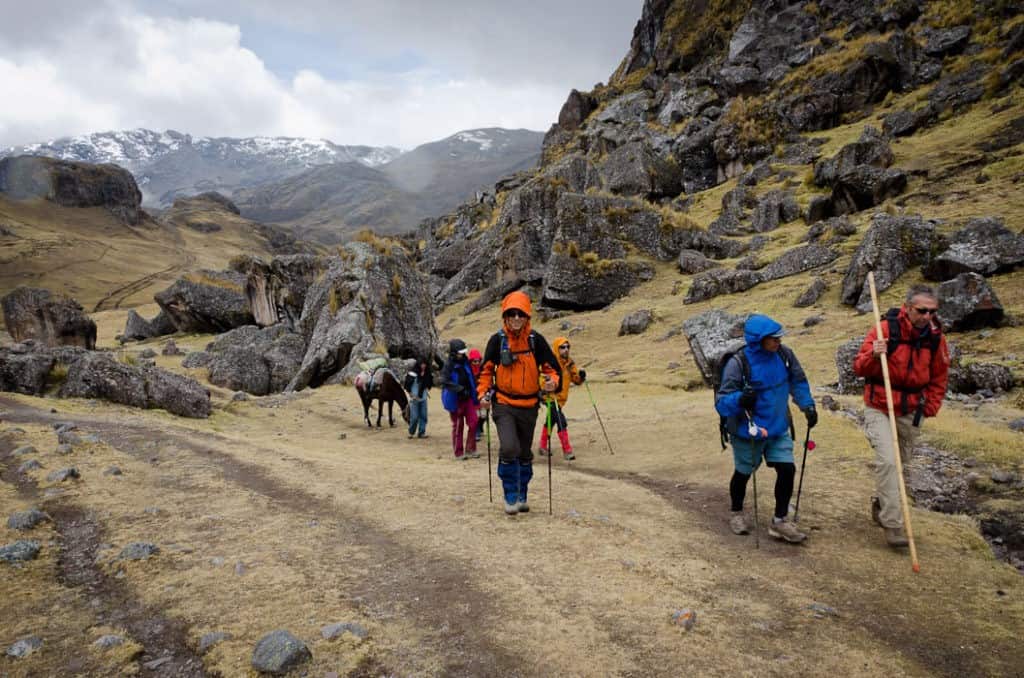
What are the Best Hiking Poles?
The best trekking poles for women and men depend very much on the individual, but top recommended brands include Leki and Black Diamond.
Which to pick varies according to whether you want, for instance, the best budget trekking pole, the best hiking sticks for seniors, the best hiking poles for women or the best ultralight trekking pole. Read more about the best hiking poles for your trip to Peru!
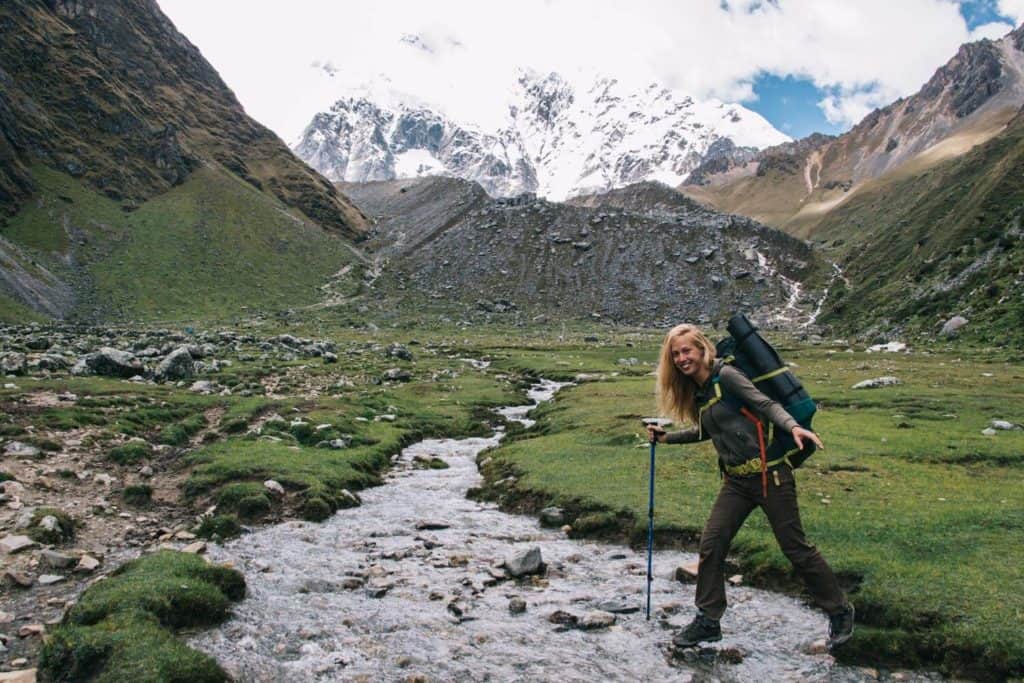
Hiking Essentials for Women
All the items covered above belong on a list of day hiking essentials for women as well as men, but you may want to give items like women’s walking leggings or the best women’s daypack for hiking special consideration.
The Best Daypacks for Women
For females, it’s often a good idea to opt for a female-specific fit when choosing a women’s day hiking backpack. Click here to find a large or small hiking backpack in a women’s design.
This is because a women’s day backpack has been designed to hug the female torso for a snug, more comfortable fit. The best day packs for women will be made so they adjust to the female form perfectly.
Hiking Leggings for Women
Hiking leggings are a good alternative to standard or convertible hiking pants for women. For many they are more comfortable, as they offer more stretch and flexibility than a pair of regular pants.
You can buy base layer leggings for women, sportier to thermal ones or those designed for outdoor wear.
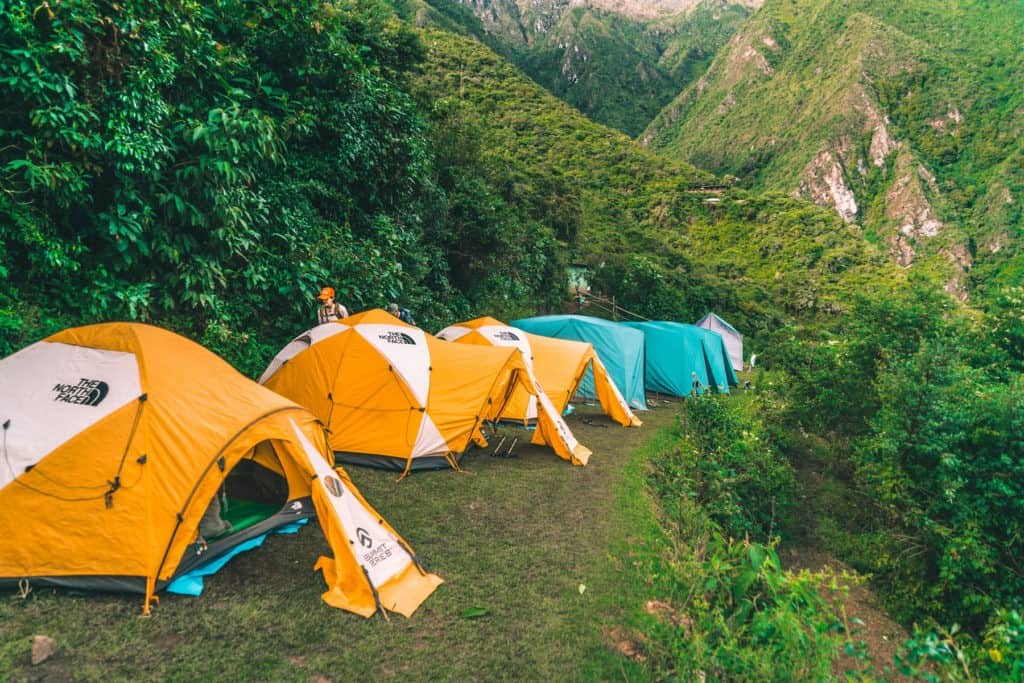
Trekking Essentials: Packing for Multi-Day Hikes
If you’re taking a longer trek, it’s much the same as packing for a day hike, but remember that you’re catering for overnight stays. Not only does this mean additional equipment, but also that you may need to add warmer clothing to your hiking packing list for coping with cooler temperatures.
A prolonged trekking trip lasting for a few days or longer may mean you need to pack a sleeping bag, a tent, cooking equipment plus more water and food. Pretty essential things for trekking anywhere in the world!
Another factor to consider is the type of trip you’re taking – part of the list of equipment for hiking may be supplied and carried by your tour operator (as it the case with Apus Peru treks).
You will normally need to supply or hire a sleeping bag, and while this may be carried on your behalf if there are porters, it may contribute to any overall weight limit that applies to the things to carry for trekking taken by the porter.
A long list of essentials for trekking may not really be required if you’re taking part in an organized trek, but if you are doing something like a Peru trek then you will need to add items like your own nightwear and toiletries to your list of things needed for trekking.
Hiking Sleeping Bags
If you’ll be taking overnight trips, one item you may wish to invest in is a good quality sleeping bag. The Rab range is excellent, and often recommended by seasoned trekkers. A down sleeping bag is best for those seeking lightweight warmth, and a great addition to your collection of overnight hiking essentials.
Do you need some hiking inspiration? Why not take a look at our article detailing all the best hikes in Peru?
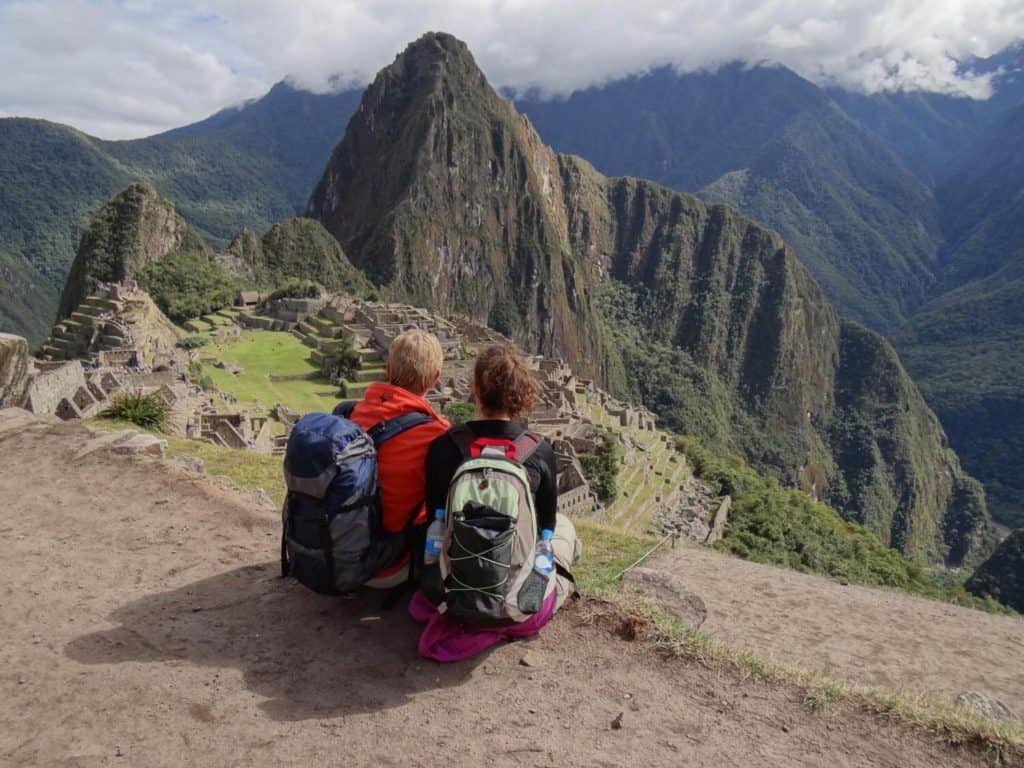
Packing for Hiking | Final Thoughts
If you’ve been wondering what should I bring on a hike, we hope this guide has helped you to work out just what to take and what you can leave behind at home.
Whether your list contains 27, 20, 10 or 13 essentials for hiking, the important things are to be prepared – and to pack in a way that suits you, where you’re headed and how long for.
From the best day hiking backpack for women or the best trekking sandals to key hiking essentials for beginners, having well-thought out and organized kit really can make your trip more memorable – for all the right reasons!
Make sure you cover the safety aspect too, especially if your route may take you into the wilderness, the woods or away from the main trails. That lightweight bit of kit could even be the one to save your life.
Related:
- Packing for Hiking: The Complete Guide to How to Pack for a Hike
- Machu Picchu Packing List
- What to pack for a trip to Peru
- Ultimate Inca Trail packing list
Like it? Pin it!
